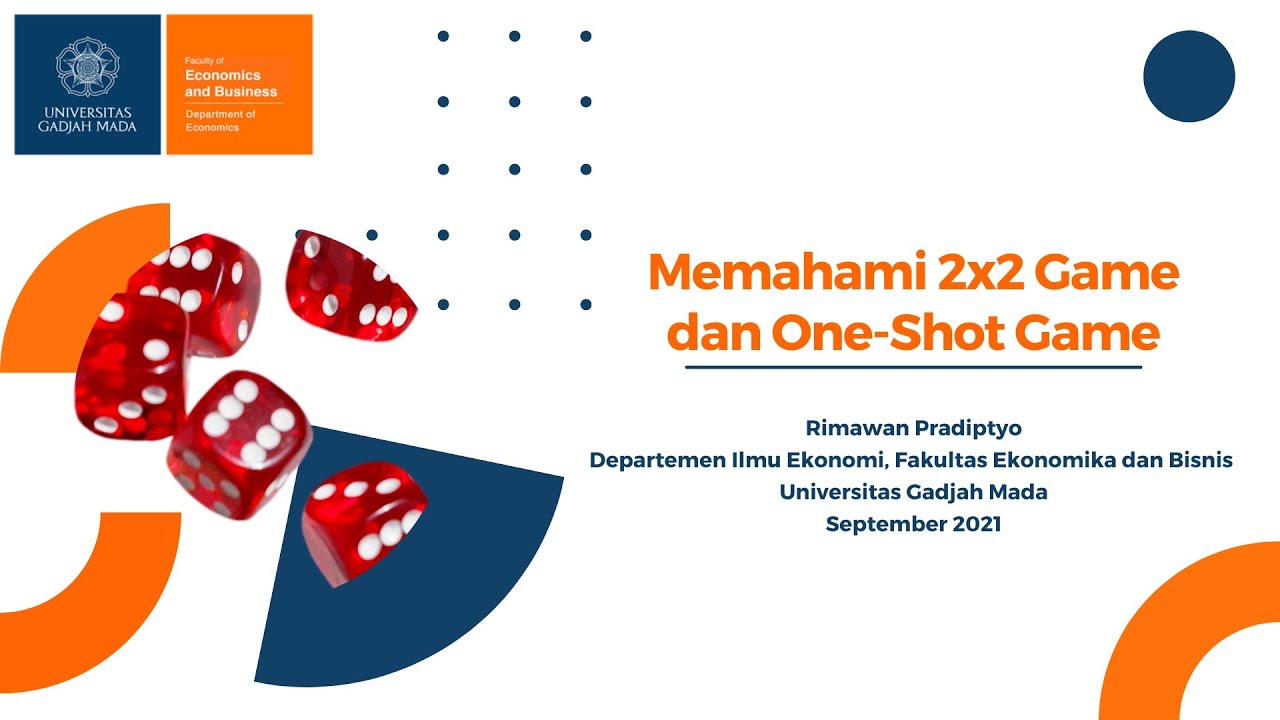How to Win with Game Theory & Defeat Smart Opponents | Kevin Zollman | Big Think
Summary
TLDRThe video delves into the complexity of zero-sum games, where one party’s gain is the other’s loss. It explores the counterintuitive strategies in such games, including randomness, and highlights the importance of the 'minimax strategy,' which aims to minimize maximum loss. The video also discusses the challenge of outthinking a sophisticated opponent and emphasizes that no one-size-fits-all strategy exists. While game theory provides solid advice for zero-sum situations, the approach must be used cautiously in non-zero-sum games to avoid ruining the interaction.
Takeaways
- 😀 Game theory is often used to analyze zero-sum games, where one party's gain is another's loss.
- 😀 In zero-sum games, the best strategy depends on the sophistication of the opponent, with more advanced players being harder to outthink.
- 😀 Counterintuitive strategies, such as random moves, can be effective in keeping opponents off guard.
- 😀 Poker players use random strategies to prevent opponents from predicting their actions, a principle backed by game theory.
- 😀 A mixed strategy, incorporating randomness, ensures that the opponent cannot outsmart you, even if they are more skilled or have more information.
- 😀 The 'minimax' strategy minimizes your maximum loss by preparing for the worst-case scenario in a zero-sum game.
- 😀 The minimax strategy guarantees that no matter how sophisticated your opponent is, you are protected from the worst outcomes.
- 😀 This strategy works best in zero-sum games, but it can be disastrous if applied in non-zero-sum games, where mutual cooperation is possible.
- 😀 When facing less sophisticated opponents, the strategy may change based on the level of intelligence and specific interactions.
- 😀 In interactions with unsophisticated opponents, game theorists have proven that there's no one-size-fits-all strategy.
Q & A
What is the primary challenge when dealing with a zero-sum situation?
-The primary challenge is that one party will win and the other will lose, making the situation very complicated and difficult to analyze.
How does game theory address zero-sum games?
-Game theory focuses on analyzing zero-sum games to determine the best strategy for each player, aiming to find a solution where one player's gain equals the other's loss.
Why does the sophistication of your opponent matter in a zero-sum game?
-The sophistication of your opponent matters because if they are very smart, it becomes less likely that you can outthink them, which affects your strategy.
What is the best strategy in a zero-sum game when dealing with a very sophisticated opponent?
-The best strategy is often counterintuitive and involves randomness, such as flipping a coin or rolling a dice, to keep the opponent off guard.
What is a 'mixed strategy' in game theory?
-A mixed strategy is a strategy that involves randomness, ensuring that your opponent cannot predict your moves and preventing them from outthinking you.
How does randomness help in zero-sum games?
-Randomness prevents your opponent from gaining an advantage by predicting your actions, ensuring they cannot outthink or outplay you.
What is the minimax strategy in game theory?
-The minimax strategy involves minimizing your maximum loss by considering the worst-case scenario and planning to avoid it, ensuring you're prepared for the worst possible outcome.
Why is the minimax strategy effective in zero-sum games?
-The minimax strategy is effective because it guarantees the best possible outcome in the worst-case scenario, ensuring you minimize potential losses no matter how sophisticated your opponent is.
Why should the minimax strategy be used cautiously in non-zero-sum games?
-In non-zero-sum games, using the minimax strategy might backfire because the situation may not involve a strict win-lose dynamic, potentially leading to negative consequences for all parties.
How do poker players apply game theory in their strategy?
-Poker players use game theory by engaging in strategic thinking about their opponents' behavior, such as bluffing or predicting their reactions, and adjusting their strategy based on their opponent's level of sophistication.
Outlines

This section is available to paid users only. Please upgrade to access this part.
Upgrade NowMindmap

This section is available to paid users only. Please upgrade to access this part.
Upgrade NowKeywords

This section is available to paid users only. Please upgrade to access this part.
Upgrade NowHighlights

This section is available to paid users only. Please upgrade to access this part.
Upgrade NowTranscripts

This section is available to paid users only. Please upgrade to access this part.
Upgrade Now5.0 / 5 (0 votes)





